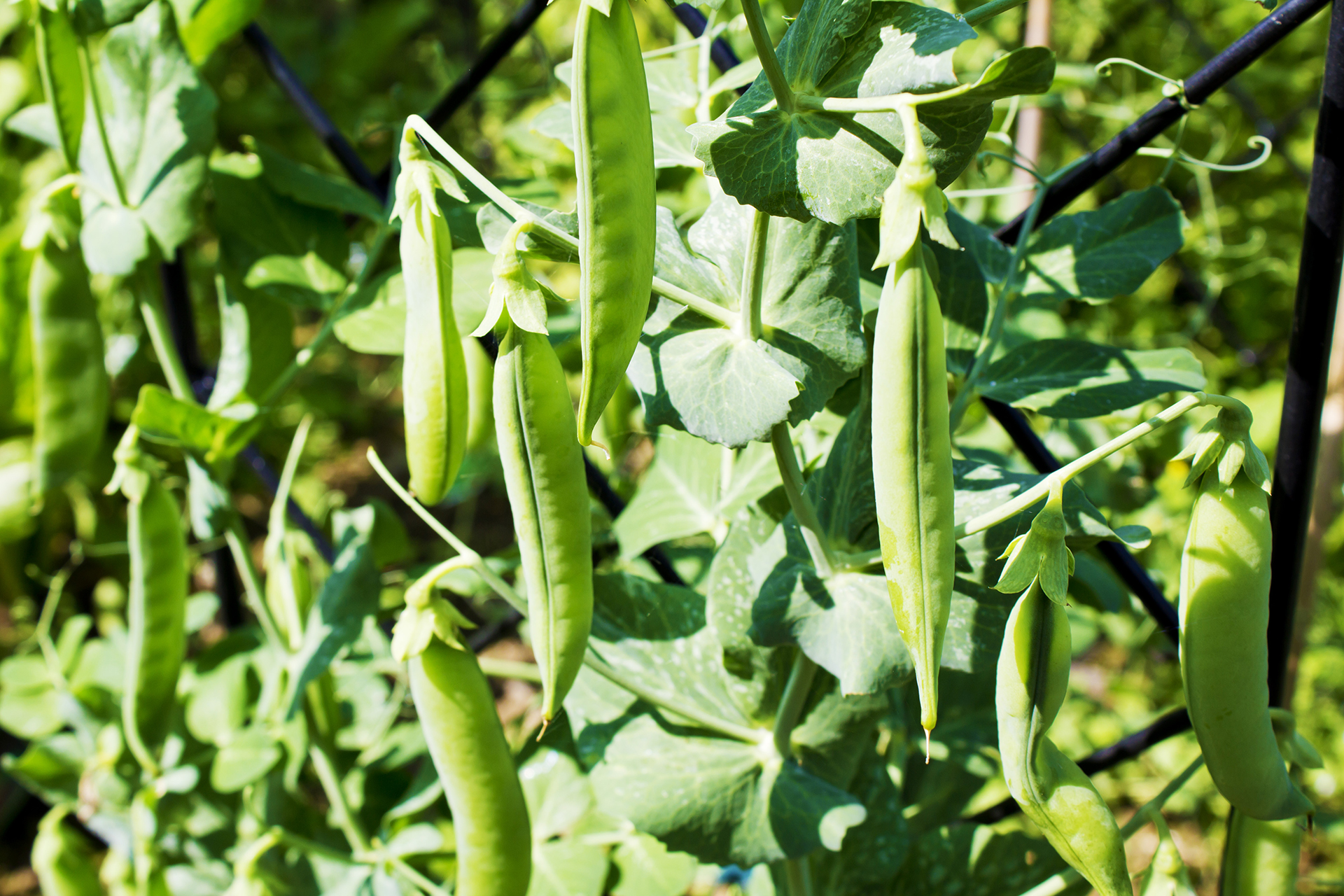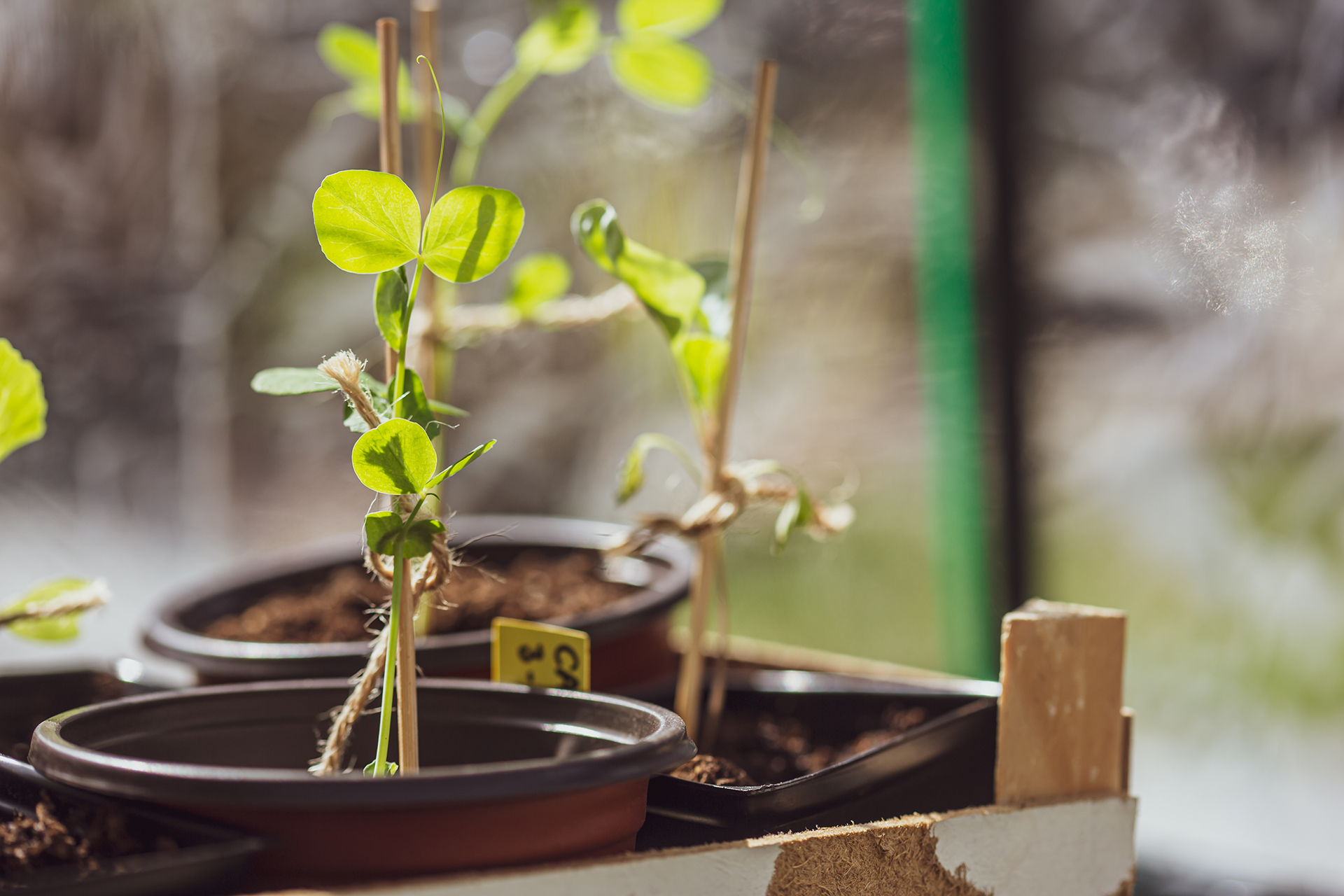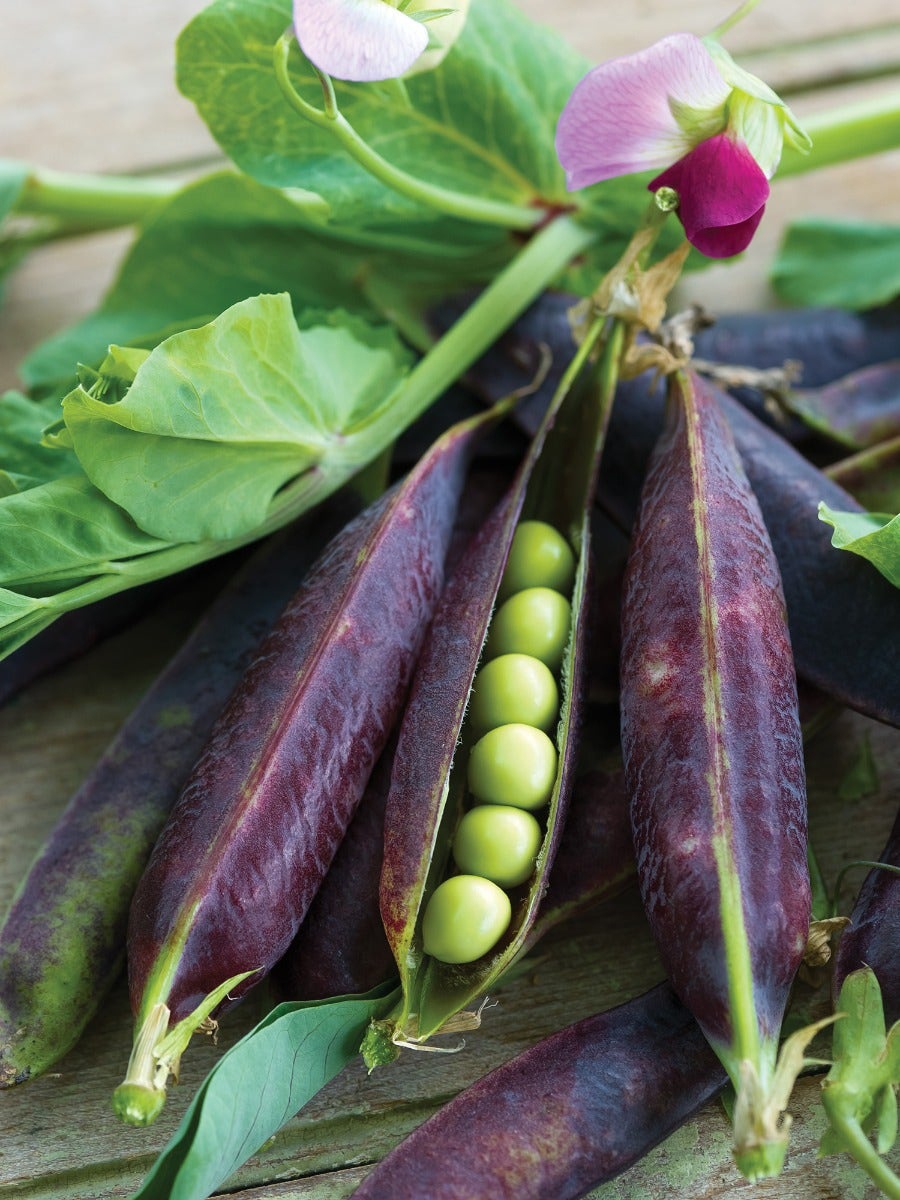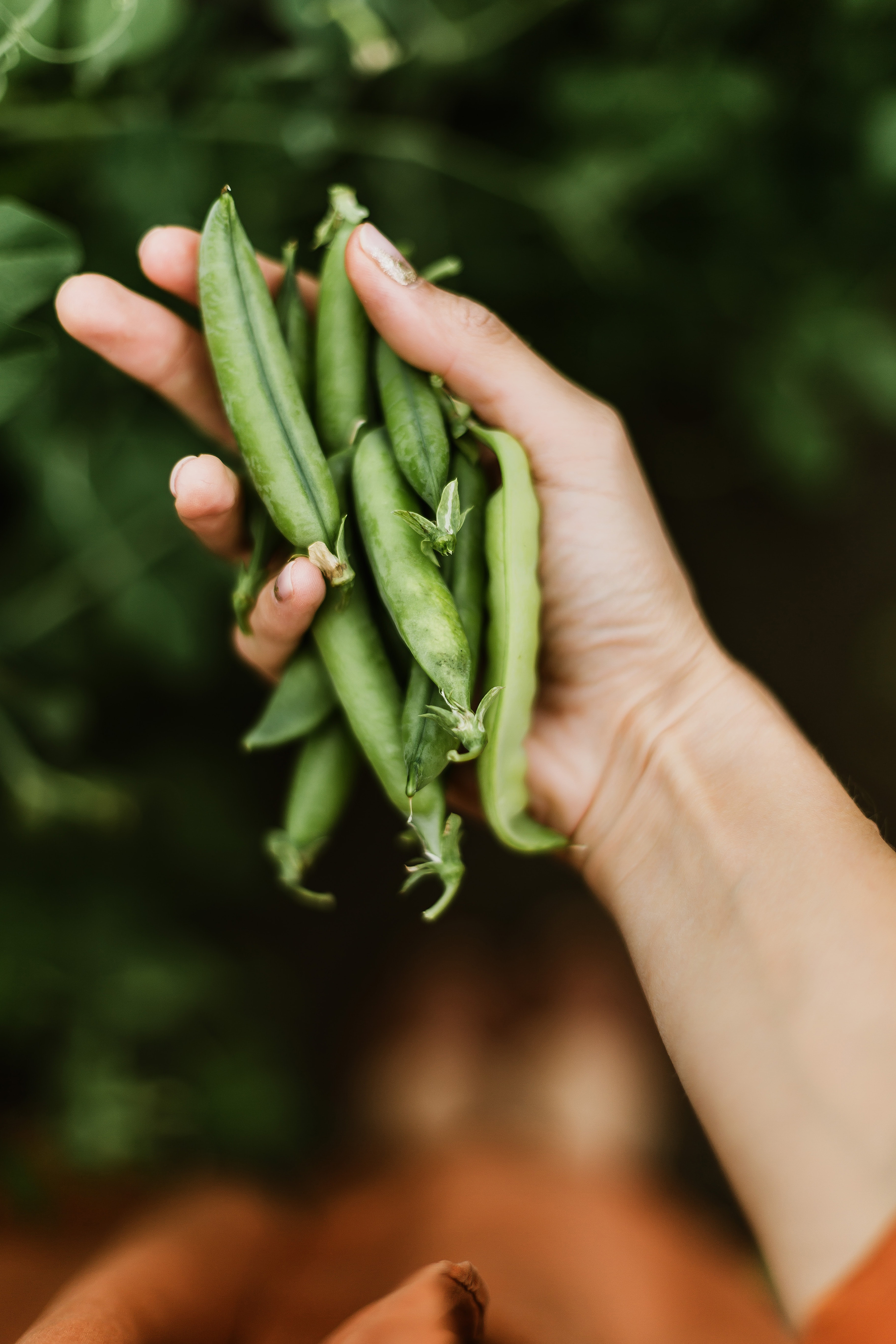How to grow peas – in pots and in the ground
Discover how to grow peas at home, and enjoy a bountiful harvest of one of nature’s sweetest crops


Learning how to grow peas is such a revelation you may feel you have stumbled upon a sacred ritual. Growing, harvesting, shelling, preserving – it takes time, but your efforts will be richly rewarded. For there are few pleasures as sweet on the veg patch – or indeed in life – as tasting your first, freshly picked peas of the season.
Peas are a versatile crop that can be grown in raised beds or borders, and equally will live happily in pots on the patio or balcony. Though they require a little effort, they are not difficult to grow, so give peas a chance in your kitchen garden plans.
As climbing plants, peas are also a space-efficient crop – perfect if you’re looking for small vegetable garden ideas – and add vertical interest. They are generous yielders, too – the more you pick, the more they will produce.
‘There is nothing like a freshly grown pea. The first time I grew them for myself, I was amazed. But, then, I grew up in the era of canned peas,’ says Nikos Kavanya, seeds purchaser at Maine-based Fedco Seeds. ‘Still, despite the increased popularity of snow – also known as mangetout – and sugar snap peas, almost the only way to get a good mass of shell peas is by growing them yourself.
‘Sweet and in the case of the mangetout type, crunchy, peas are as much an early summer ritual as the sweetcorn will be later on. Mine seldom make it into cooked dishes since they are so darn good fresh. But if you grow an abundant crop they are easy to freeze and will bring summer onto the table when the snow flies.’

How to grow peas from seed
It is best to grow peas from seed, unless you missed the sowing window, in which case you can buy young plants from the garden center.
‘Peas are a cool season crop and so best planted in early spring, then again in midsummer for a fall harvest,’ says Kavanya. ‘They grow best in well-drained soil, in full sun, and benefit from trellising.’
Design expertise in your inbox – from inspiring decorating ideas and beautiful celebrity homes to practical gardening advice and shopping round-ups.
Before planting peas, prepare the ground by digging over and removing weeds and large stones. Add plenty of organic matter to the soil, but not manure as it's high in nitrogen, meaning you'll get lots of foliage and few pods.
To ensure a continual supply of peas, rather than a single glut, try sowing seeds successionally, every two weeks.
- You can sow peas directly in the ground once the last frost has passed and the soil has begun to warm up. Avoid starting them off in overly wet conditions.
- Sow twice as many seeds as you need, and thin out the weaker seedings as they grow.
- Plant the seeds 1-2 inches deep – this can vary by variety so check the packet instructions.
- Ultimately you want plants spaced around four inches apart, and in rows at least two feet apart.
- For an early crop, it's best to start peas off under cover.
- As peas have long roots, you should use tall pots or root trainers, to allow the seedlings to develop a strong root system.
- Use a general purpose, well-draining potting mix and plant one seed per pot.
- Water them, but don't soak them or the seeds could rot.
- Germination can happen in as little as a week, but this could take up to a month in colder weather.
- The plants will grow quickly, so it’s best to put support in place as soon as possible, to avoid damaging the plants later on. Even dwarf peas will benefit from some support.
- Keep the soil moist and do not let it dry out.
- Once the plants have flowered, fertilize weekly with liquid tomato feed.

How to support peas when growing
Peas are climbing plants, so it’s important to provide support for them while they are growing. ‘Trellis will get the pea plants up off the ground, away from soil fungus and the easy reach of slugs,’ says Kavanya.
There are a number of fantastic vegetable garden trellis ideas that will help you to get the best out of your peas. Add supports while the plants are still young, and they will shoot out tendrils as they grow, which makes it easy to train them.
‘Grow peas up tripods and climbing frames, or cover fences or walls with wire, twine or lattice,’ says gardening expert Leigh Clapp. ‘Plant them next to sweet peas for added color and scent, and nasturtiums to attract blackfly away from crops.’

How to grow peas in pots
Peas are a wonderful addition to a vegetable container garden, and make a pretty feature on a patio or balcony. Keep the plants close to the kitchen, to remind you to regularly harvest the pods. Dwarf pea varieties are particularly well suited to growing in pots.
You will need a good-sized container – at least 3-5 gallons, in which you can grow 3-6 pea plants. To grow more than that, you will need a larger pot, or multiple containers or grow bags.
Use a standard potting mix that’s recommended for vegetables, or make your own, mixing in garden compost.
Peas in pots will require support as they grow, so either position them close to a trellis, or insert sticks in the pots.
'Make sure the support goes in at the start – in this case, when you are sowing the seeds direct – so that you don’t damage the roots later on,' says Aaron Bertelsen in Grow Fruit & Vegetables in Pots. 'You’ll need pea sticks or brushwood to give the tendrils something to twine around. I like to put the sticks in the center of the pot – make sure it’s a large one, as this is a heavy crop.'
Bear in mind that the soil in pots will dry out more quickly than the ground, so keep on top of watering. 'Water thoroughly every other day to keep the peas fresh, plump and green,' advises Bertelsen.
Fertilize every week from flowering, using liquid feed.

Which varieties of pea?
There are so many varieties of peas to try, all with their own unique flavor and growing properties. Each has its own sowing and harvesting period, too, so choose more than one type to extend the growing window.
While new varieties are created every year, there are some wonderful heritage peas to try. 'They are worth growing to keep your taste buds imbued with old-time flavor,' says Kavanya.
As their name suggests, shelling peas need to be shelled, as the peas will swell up quite large within the pods – although you can eat them whole when they are young. The seeds will either be wrinkled or round, and there are some round varieties that can be sown in the fall to give a spring harvest.
Mangetout – or snow peas – and sugar snaps are eaten whole with the pods. Mangetout don't really develop proper peas, staying flat, while sugar snaps develop peas slowly, so if you leave them on the plant too long you can harvest them for regular peas. Both are ideal if you don't like the idea of shelling a lot of peas.
Dwarf varieties are simply smaller plants – rather than the pods being miniature – and are much more manageable if you are short on space or growing on a balcony.
- Alderman is a fantastic allrounder shell pea with a long cropping period. Ideal if you only want to grow one variety.
- 'Emerald Archer is a newer organic midseason shell pea that is quite outstanding for its yield and taste,' says Kavanya. 'Plus it is an AFILA type, which means it has lots of tendrils to use in your cooking.'
- Purple Podded peas are visually striking on the plant, but the peas inside are green.
- Hurst Green Shaft is an easy to grow, sweet tasting, heavy cropping English pea that freezes well.
- Douce Provence is a round seeded first early variety that can be started off in the fall.
- For dwarf peas, try Markana, Snowbird or Blue Bantam.
- For mangetout, or snow peas, try Carouby de Maussane, a lovely heritage variety from France with pretty bicolored flowers and large pods. Also try Blizzard, Norli and Weggiser.
- Sugar snap peas are often generically named, but Kavanya recommends Mega and Sugar Lode.

How to harvest peas
Depending on the variety and time of year, peas should be ready to harvest 8-12 weeks after sowing, and should be picked at their peak.
Learning when to harvest peas requires a little bit of trial and error, but for shelling varieties, you want the pods to be plump with peas – almost cylindrical in shape. There should, however, be a small gap between the peas when you hold the pods up to the light.
Sugar snap and mangetout varieties should be harvested just as the peas inside are showing signs of forming.
When picked at the right time, peas should taste tender and sweet – if they taste a little bitter and have a touch texture, then you left them on the plant for too long.
Working from the bottom of the plant upwards, pick using both hands, or use clean scissors.
To shell peas, simply snap off the end of the pod and pull it open, then remove with your fingers.
Either prepare and eat your peas immediately, or freeze them to preserve their fresh flavor.
'Peas are a wonderful example of an annual crop that tastes immeasurably better when eaten fresh, and the shoots are utterly delicious too, added to salads, pasta or risotto,' says Bertelsen.
You can compost the empty pods, or you can use them to make a soup or sauce.

Pests and problems
Mice and birds love pea seed, so either cover your crop or start them off under cover. This will also help get them past their seedling stage, when they are most vulnerable to slugs and snails.
As with many plants, aphids can be an issue, but this can be managed through companion planting techniques. 'Calendula attracts hover flies, which eat aphids on peas and beans, while nasturtiums repel aphids among the peas,' says Clapp.
Look out for pea moth caterpillars, which are a result of moths laying their eggs on peas that are in flower, and sadly will lie undiscovered until you open the pods. If your crop is affected, then next year try timing your sowings to be ready before or after high summer, when the caterpillar hatches. Alternatively, protect your crop with mesh.
Mangetout peas won't be affected by pea moth, as they are harvested before the peas develop.

How long to grow peas?
Peas take between 8-12 weeks from sowing until harvesting, but should keep on producing peas for a number of weeks afterwards, as long as you keep picking them.
Once the plant has stopped producing, it's worth leaving a few pods on the plant to dry out and leave you with some seeds for next year's sowing.
Do peas need to climb?
Climbing peas can reach over 6 foot, so will need some support to climb, otherwise they will flop onto the ground.
Even dwarf varieties will benefit from a couple of sticks, though they will support themselves to some degree.
What is the best way to grow peas?
The best way to grow peas is from seed, started off undercover in early spring, then planted out after the risk of frost has passed.
Do peas need sun or shade?
Peas dislike climate extremes, preferring not to be either too hot or too cold, so if you live in a warm climate you will need to provide shade at the hottest point of the day.
The plants will tolerate damp weather happily enough, but don't like to become waterlogged.

Melanie has worked in homes and gardens media for two decades. Having previously served as Editor on Period Living magazine, and worked on Homes & Gardens, Gardening Etc, Real Homes, and Homebuilding & Renovating, she is now focusing on her passion for gardening as a Senior Editor at Gardening Know How. As a keen home grower, Melanie has experimented with pretty much every type of vegetable at some point – with mixed results. Often it is the simplest things that elude you, which may explain why she just can't seem to master zucchinis.